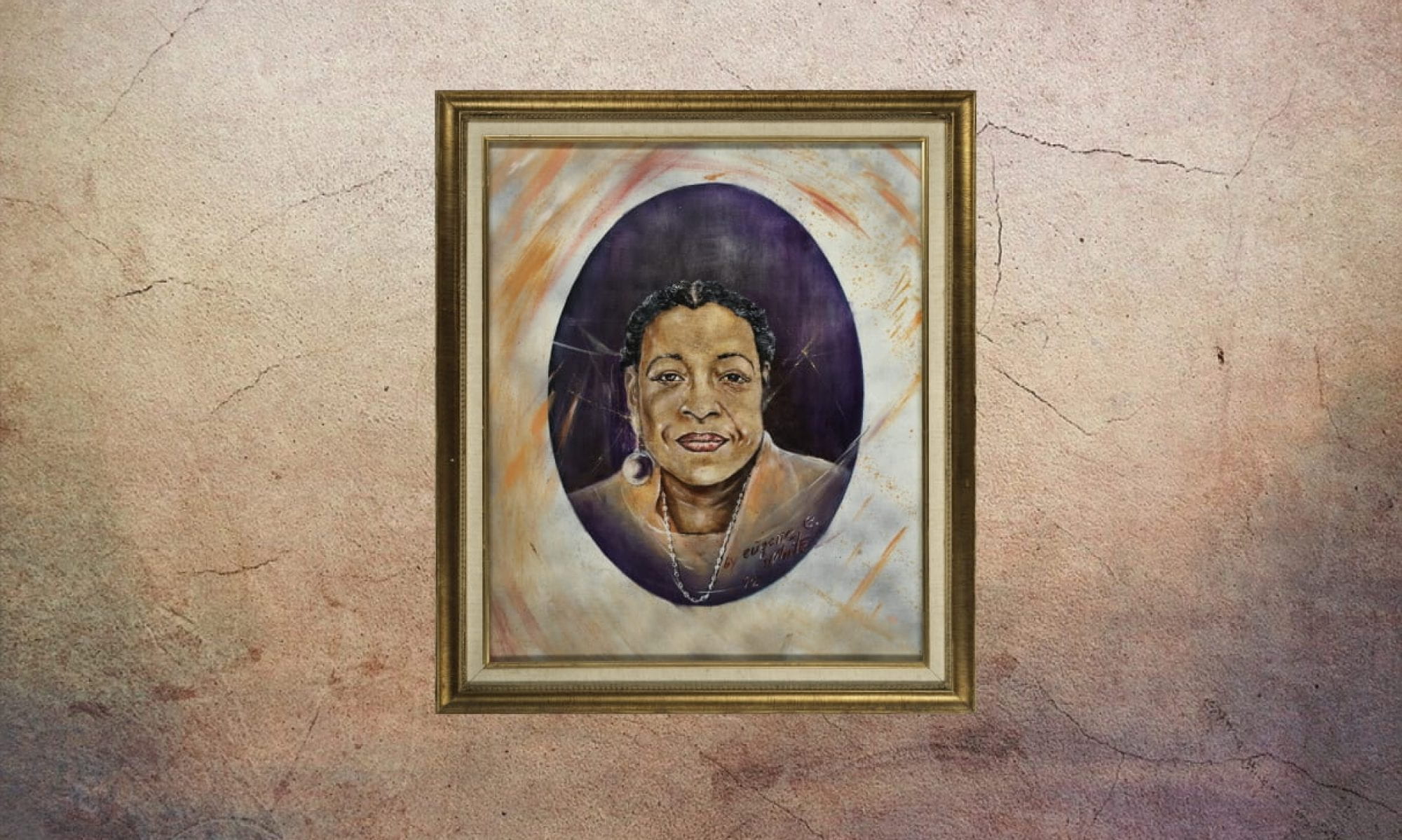
Revolutionary artist Eugene E. White was not afraid to depict the truth regarding race. His work unabashedly celebrates Black culture and art while faithfully encapsulating Black history and Black lives. White’s legacy as a creative thinker captivates and inspires people not only in San Francisco but also all over the United States and the world.
Eugene E. White was born in Ozan, Arkansas, on March 29, 1933, to James and Maggie White. He spent his younger years developing his artistic talents in an era where Jim Crow laws shaped the way he lived. As a young boy, White spent much of his childhood doing agricultural work. White’s rigorous upbringing played a huge role in his creative focus.
In an interview with the University of San Francisco’s Martín-Baró Scholars, White told an anecdote about how he would cleverly maneuver his way through his school subjects. He explained, “I used to bargain in school. I would look for other students who were good in math or English and ask them to do my homework for me. If they said yes, I would draw them pretty pictures or write their names in calligraphy.” White showed an affinity for art since a young age but never fully realized it until it became his passion later in his life.
In the 1950s, Eugene moved to Detroit and worked for Cadillac motor company, and, briefly as a designer. In 1958, White ventured to San Francisco, where he opened his very first black-owned and independent gallery and an electronics store in 1962. In 1963, White suffered a life-threatening car accident on the Bay Bridge. Throughout his hospital stay, loved ones constantly surrounded and supported him. White credits his loved ones and the visits and prayers of others as the major reason for his survival.
After his stay in the hospital, and after having opened his second art gallery in 1963 on Hayes Street in San Francisco, White began to take inspiration for his art from his childhood. He was drawn back to the plight, struggle, defiance, and beauty of being black in America. In 1964 he was invited by Bulart to select from his art, works that would be displayed in his very first art show at the Hall of Flowers in Golden Gate Park.
Ever since his debut, White has earned numerous accolades and significant recognition for his work. White’s art gave the African American / Black community validation and resolve. In all his work, White was able to portray the full range of black existence—particularly black excellence. In 1967 White became the first Black visual artist to display his work at the Monterey Bay Jazz Festival. In the 1970s his art was exhibited in the Chicago Black Expo, the Congress of African People’s first Black Art Festival, among many others.
Mayor Ed Lee proclaimed July 11, 2013, to be Eugene E. White Day in San Francisco.
White’s influence led him to be asked to speak at Howard, Yale, Stanford, Notre Dame, and Harvard, among other universities. His influence also extends beyond the U.S. borders: he was given the opportunity to exhibit and speak about his art at FESTAC, an international art festival in Lagos, Nigeria.
Locally, White’s murals have graced the walls of the Third Baptist Church baptistry, the gym at the Ingleside Presbyterian Church, and at the Ella Hill Hutch Community Center, where his rendition of the Juneteenth mural, commissioned by Mayor Willie L. Brown, depicts the migrations of African Americans from the south. A pin portrait of White can also be found on the Buchanan Mall as well.
Always a devoted parent, he was awarded the Father of the Year Award by KDIA radio in 1976.
From 1975–2012, White published a beautiful quarterly magazine called KUJIONA (meaning “to see oneself ” in Swahili). Unfortunately, during this period, in the 1980s, White’s studio suffered a major fire, destroying more than 50 works of art, but the fire strengthened his resolve to paint even more.
Just after ending his print run of KUJIONA, White turned his attention toward writing his autobiography, Jabo’s Boy—Now His Manchild, which was published in 2004.
In recognition of his many artistic contributions and his dedication to his community for well over 50 years, the San Francisco Art Appreciation Society honored White on July 11, 2013, and Mayor Ed Lee proclaimed that same day to be Eugene E. White Day in the city of San Francisco.
An outstanding Citizen Film documentary about White’s work and life, To See One’s Self, directed by Sophie Constantinou, was released in 2017.
At the age of 84, White completed a portrait for historic Black Bennett College in North Carolina. His involvement in the community included political, social, civic, and business interests, and his participation as a Layman at his Third Baptist home church in San Francisco.
Eugene E. White passed away on February 8, 2019, with his wife of 48 years at his side. His life was celebrated by hundreds of mourners at Third Baptist Church, with poignant remarks made by Mayor London Breed and Rev. Dr. Amos C. Brown. The Board of Supervisors formally celebrated White’s life at its March 5, 2019 Board meeting.
White is survived by his wife and community activist, Lynnette Frenchwood-White; their daughter Tracye Taylor; grandchildren Grandville Taylor IV, Natasha Taylor, Nykoloe Taylor, Trevion Speed, Jamarion Speed, and Jamarie Speed; and great grandson, Grandville Taylor V.
— Teresa Fishman, Yaqub Elmi, Kimberly McAllister, Ian Duke, Matt Chiodo, and Mei Lin
Works Cited
“Artist Eugene E. White to Be Honored by SF Appreciation Society.” San Francisco Bay View. 4 Jul 2013.
“Eugene E. White, Artist.” African American Registry. 2015.
Interview with Martín-Baró Scholars. University of San Francisco. 22 Sep 2017.
To See One’s Self. Citizen Film. Sophie Constantinou (Director), Tamara Walker (Producer). 2017.
White, Lynnette. “Beloved Artist Eugene E. White Passes.” San Francisco Bay View. 20 Feb 2019.
